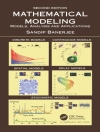Most physical problems can be written in the form of mathematical equations (differential, integral, etc.). Mathematicians have always sought to find analytical solutions to the equations encountered in the different sciences of the engineer (mechanics, physics, biology, etc.). These equations are sometimes complicated and much effort is required to simplify them. In the middle of the 20th century, the arrival of the first computers gave birth to new methods of resolution that will be described by numerical methods. They allow solving numerically as precisely as possible the equations encountered (resulting from the modeling of course) and to approach the solution of the problems posed. The approximate solution is usually computed on a computer by means of a suitable algorithm.
The objective of this book is to introduce and study the basic numerical methods and those advanced to be able to do scientific computation. The latter refers to the implementation of approaches adapted to the treatment of a scientific problem arising from physics (meteorology, pollution, etc.) or engineering (structural mechanics, fluid mechanics, signal processing, etc.) .
表中的内容
1- Numerical specifications
2- Approximation and interpolation
3- Direct and iterative methods for solving linear systems
4- Resolution of non-linear systems
5- Digital derivation and integration
6- Calculation of the values and eigenvectors
7- Least squares approximation
8- Solving Differential Equations
9- Methods of Finite Differences and Finite Elements
10- Finite volume methods and spectral method
11- Meshless methods
12- Subdomain methods and parallel calculation
关于作者
Bouchaib Radi, Faculty of Sciences and Technology Settat, Morocco.
Abdelkhalak El Hami, INSA of Rouen Normandie, University Normandy, France.












